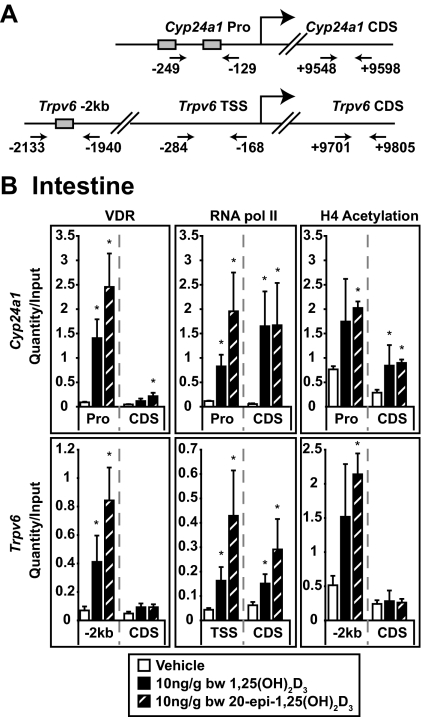Figure 5.
20-Epi-1,25(OH)2D3 induces VDR binding, H4 acetylation, and RNA pol II recruitment to the Cyp24a1 and Trpv6 genes in the intestine. A, Regulatory regions of the Cyp24a1 and Trpv6 genes. Depicted is the location of regulatory elements and positions of the primer sets used to evaluate the presence of Cyp24a1 and Trpv6 gene fragments. All numbering is relative to the transcriptional start site (TSS). Shaded boxes refer to the presence of an established vitamin D response element. B, Detection of VDR binding, H4 acetylation, and RNA pol II recruitment at the Cyp24a1 and Trpv6 genes. C57BL6 mice were treated with vehicle, 1,25(OH)2D3, or 20-epi-1,25(OH)2D3 (10 ng/g bw) and the duodenum isolated 1 h later and subjected to ChIP analysis using antibodies to VDR, tetraacetylated H4, and RNA pol II. Samples were analyzed by qPCR using the primer sets documented in A. For all samples, each point represents the average quantity/input ± se (n = 4) with an unpaired t test compared with vehicle. Statistical groups were created within each primer set and antibody (*, P < 0.05). These experimental results are representative of three to five similar experiments. CDS, Coding region control; Pro, promoter.

